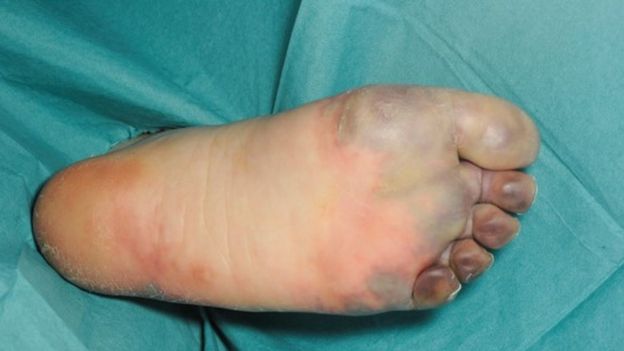Sepsis is a life threatening condition that occurs in more than 200,000 cases per year. Following an infection, it is normal for the human body to release chemicals into the bloodstream. When sepsis occurs, the body’s response to the chemicals is unbalanced, triggering a chain reaction of events that can damage multiple organ systems. Without timely treatment, the damage to the organs can lead to organ failure. If the sepsis is not treated and stopped, it can lead to septic shock, which is a medical emergency.
It is important to recognize the symptoms of sepsis. According to https://www.healthline.com/health/sepsis#symptoms , “There are three stages of sepsis: sepsis, severe sepsis, and septic shock. Sepsis can happen while you’re still in the hospital recovering from a procedure, but this isn’t always the case.” The symptoms of sepsis include: a fever above 101ºF or a temperature below 96.8ºF, a heart rate higher than 90 beats per minute, breathing rate higher than 20 breaths per minute, and/or probable or confirmed infection. In order for a doctor to diagnose sepsis, two of these symptoms must be present. The Mayo Clinic also lists a change in mental status as a symptom of sepsis, states the respiratory rate needs to be higher or equal to 22 breaths per minute rather than 20, and that your systolic blood pressure is equal or less than 100 millimeters of mercury (https://www.mayoclinic.org/diseases-conditions/sepsis/symptoms-causes/syc-20351214 ). As you can see, a diagnostic criteria can slightly vary based on your doctor or hospital. Severe sepsis occurs when there is organ failure. Septic shock occurs when your organs are failing and you also have a severe drop in blood pressure.
Causes of sepsis can be from any type of bacterial, viral or fungal infection. Common infection causes include: pneumonia, digestive system infection, kidney bladder or urinary infection, and bloodstream infections. The Mayo clinic states that, “Complications from sepsis range from less to more severe. As sepsis worsens, blood flow to vial organs, such as your brain, heart and kidneys, becomes impaired. Sepsis can also cause blood clots to form in your organs and in your arms, legs fingers and toes- leading to varying degrees of organ failure and tissue death (gangrene). Most people recover from mild sepsis but the average mortality rate for septic shock is about 40 percent. Also, an episode of severe sepsis may place you at higher risk of future infections.”
Recovery from sepsis is more likely if treatment is administered as soon as possible. The Center for Disease Control states on their website, https://www.cdc.gov/sepsis/diagnosis/index.html, “Research shows that rapid, effective sepsis treatment includes:
- Giving antibiotics
- Maintaining blood flow to organs
- Treating the source of the infection
Doctors and nurses treat sepsis with antibiotics as soon as possible. Many patients receive oxygen and intravenous (IV) fluids to maintain blood flow and oxygen to organs. Other types of treatment, such as kidney dialysis or assisted breathing with a machine, might be necessary. Sometimes surgery is required to remove tissue damaged by the infection.”
Sepsis recently gained attention from BBC news. A story in January of 2019 gave spotlight to the fact that 911 responders in Wales need to implement a sepsis protocol. The story focuses on a woman that was misdiagnosed due to the lack of a sepsis protocol. Dr Paul Morgan, sepsis leader for Cardiff and Vale University Health Board, said the situation is “not acceptable” and called for a change. The ambulance service says, the complexity of sepsis makes it very difficult for a call handler to make a judgement on the condition over the phone.” The woman who was misdiagnosed and nearly died, hopes the story will bring attention to the much needed sepsis protocol implementation.

The sepsis resulted in the woman having to have all of toes amputated.
Sepsis is life threatening. The sooner the symptoms are recognized and the sooner it is treated, the more likely the patient will recover. El Camino Hospital says to call 911 if any of the symptoms in the graphic below occur.

References:
Mayo Clinic: Sepsis; https://www.mayoclinic.org/diseases-conditions/sepsis/symptoms-causes/syc-20351214
Center for Disease Control and Prevention: How is sepsis diagnosed and treated? https://www.cdc.gov/sepsis/diagnosis/index.html
Healthline: Sepsis; https://www.healthline.com/health/sepsis
BBC. Sepsis: Ambulance call handlers ‘must spot condition’; https://www.bbc.com/news/uk-wales-46827297
Sepsis graphic of symptoms: https://www.elcaminohospital.org/stay-healthy/blog/what-sepsis